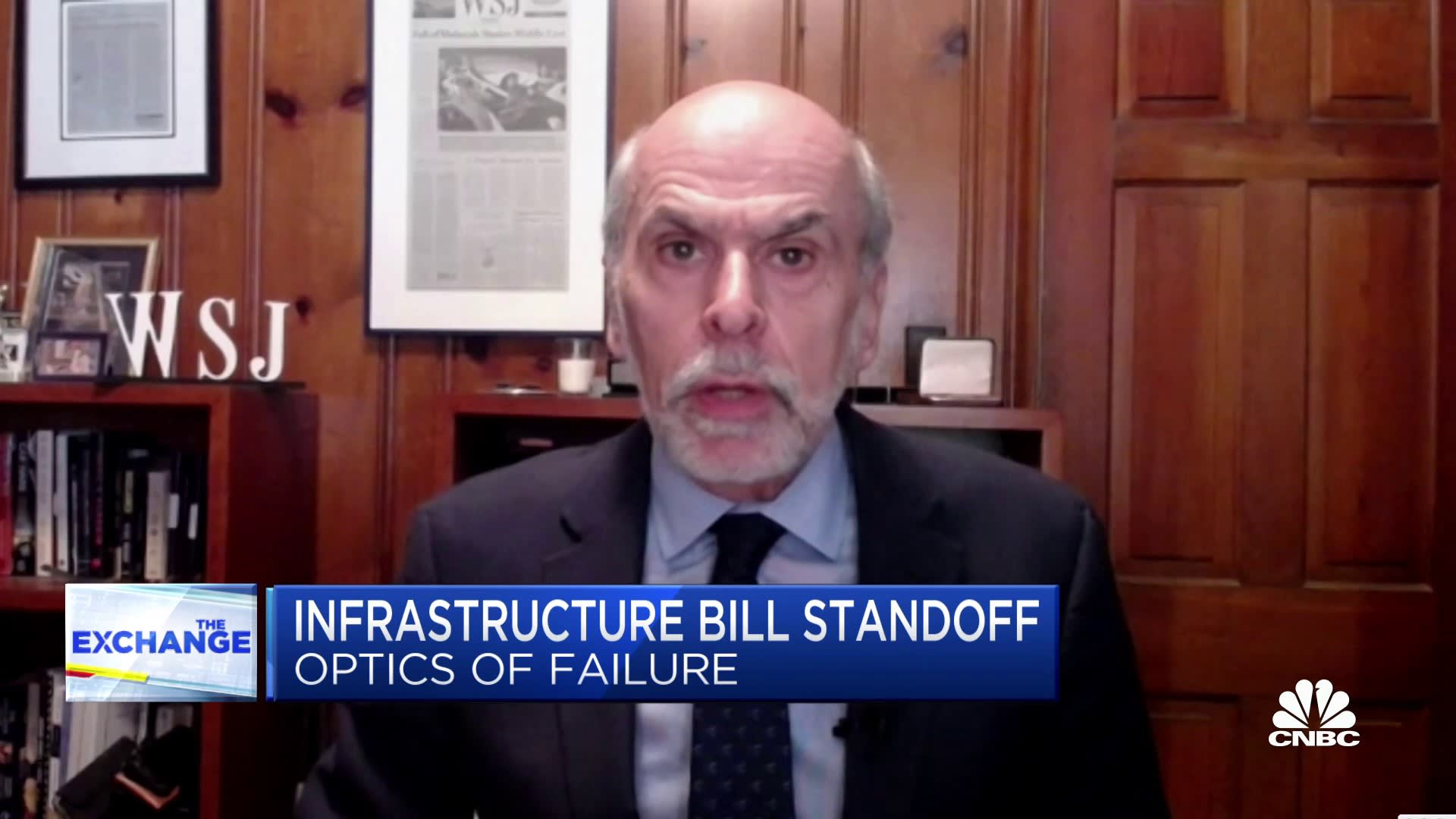EDITOR'S NOTE
There was a strange aspect to the discussion we had with Bernstein's Stacy Rasgon on Power Lunch last week; we started talking about semiconductor gluts, not shortages.
It all started with his downgrade of chipmaker NXP, a key supplier to legacy automakers, on Thursday. "It is a clear certainty that auto semis are 'over-shipping' auto production," he wrote--possibly to the tune of 30-40%! This, he wrote, is "far too much to contribute to 'natural' content increases," like more chips per car, or mix, or pricing. Quite simply, "We...see evidence of inventory building in the supply chain...[and] the trajectory within automotive is admittedly making us increasingly uncomfortable." That said, he still rates them market perform for now.
When we asked him about the downgrade, he said part of the problem is automakers have now been hoarding chips so they don't fall short of these key parts again. Which is understandable, but also worrisome from the lens of future demand. You pair that with the drop in auto production, and it's even more stark--IHS estimates more than seven million vehicles are "missing" because of production problems this year. Meanwhile, auto sales have slumped to just a 12 million annualized rate as of September, down 30% from their April peak, and buying plans for autos in major sentiment surveys continue to decline.
Cathie Wood was tweeting the same thing over the weekend. "We would not be surprised to see chip supplies loosen up considerably, perhaps turning the problem from a shortage into a glut," she said. She also differentiates between the weakness in "gas-powered auto demand," and Tesla, whose production and sales keep rising. One certainty is that Tesla has been able to absorb the chip problems by making more sophisticated, easily swappable designs, while legacy automakers are still relying on older chips. Intel last month said it would launch a new program to "assist" them "in moving to more advanced process nodes."
The real question is whether the semi glut could become a problem specific to autos, or a broader one with bigger negative implications for the market and economy. Bernstein's Rasgon is also seeing overshipment of chips for laptops and notebooks to the tune of 30% recently, one reason he is negative on shares of Intel.
Even more broadly, he notes that chip sales are nearing historic levels as a percentage of global GDP--their 0.6% estimated share topped only during the tech bubble in 2000. Morgan Stanley's economics team highlighted a similar development this morning. "Semiconductor supply chain inventory is heading up," they wrote. According to the firm's analysts, "Supply chain inventory...is now 29 days above the historical median."
Ellen Zentner, the firm's chief U.S. economist, says this is part of a normalization we're starting to see in supply chains more broadly. "While most investor focus has centered on the upside risk to inflation next year," she writes, "I think it's worth continuing to note the downside risk that prices for core goods collapse." (Emphasis mine.)
So there you have it. If the worst of the chip shortage is already behind us, the only question now is whether prices can avoid dropping as quickly as they rose. The barometer SMH ETF is down 7% from its mid-September all-time high, but still trading around $250. Pre-Covid, it was trading around $150. If Covid just sped up the future, this elevated net worth of the chip industry might make total sense. But if this turns out to be an old-fashioned shortage/glut cycle, these valuations look more worrisome.
See you at 1 p.m!
Kelly

KEY STORIES
IN CASE YOU MISSED IT
| ||||||||||||||||||||||||||||||||||||||||||||||||||||||||||||||||||||||||||||||||||||||||||||||||||||||||||||||||||||||||||||||||||||||||||||||||||||||||||||||||||||||||||||||||||||||
Senin, 04 Oktober 2021
Are semis the next lumber?
Langganan:
Posting Komentar (Atom)








Tidak ada komentar:
Posting Komentar